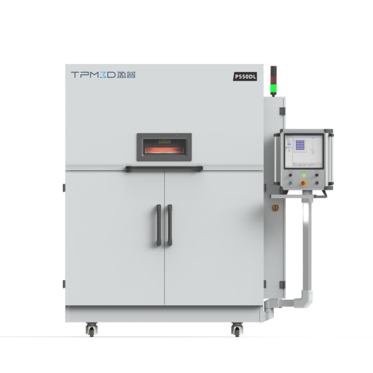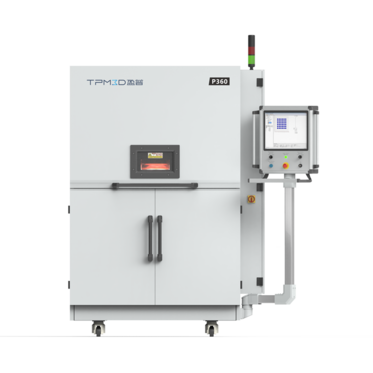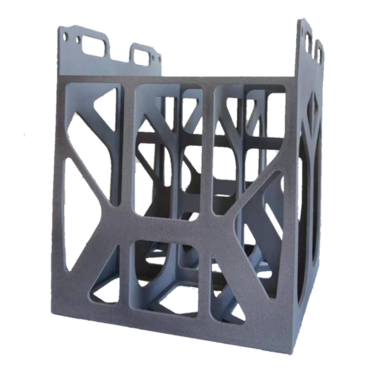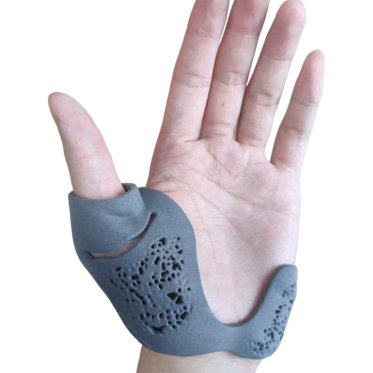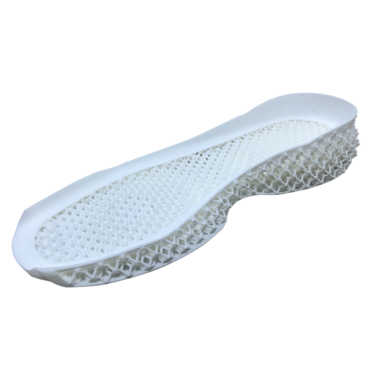Nowadays, we can often see people wearing glasses, such as myopic glasses, sunglasses, ski glasses and other different functions and styles. It can be said that glasses play a very important role in people's lives!
People usually go to regular eyeglasses stores to get glasses and go through the process of "choosing frames + optometry lenses + wearing finished products". This kind of traditional glasses is cheap and fast, but less comfortable, and we will feel tired after wearing for a long time.Custom eyeglasses can be completely personalized based on individual facial features and personal preferences. Customized glasses are comfortable and personalized to wear, and are gradually favored by consumers.
Customized glasses are divided into the traditional pure manual customization and 3D printing customization. Traditional manual customization uses one-to-one private design, data measurement, determination of design scheme, hand-made frames, try-on, delivery, etc. The processing cycle is about 6-10 weeks, with high costs.
.png)
Customized eyeglass frames with 3D printing technology can be made of printing photosensitive resin materials with light curing technology (SLA/DLP) and nylon powder with selective laser sintering (SLS) technology. The surface of the frame made of photosensitive resin material is smooth and transparent, and the detail shape can be more delicate.
.png)
Selective laser sintering (SLS) technology is one of the most common choices for customized glasses because the frames printed by the polyamides with SLS technology featuring: good toughness, light weight, better temperature and aging resistance.
.png)
What is the process of using SLS 3D printing technology to make eyeglasses frames?
Firstly, we need to select the style in eyeglasses store, and then 3D scanning technology is used to obtain facial and head data which will take 30 seconds to 1 minute, ending up with optometry and lens selection, and then we can go home and wait for the delivery.
Secondly, engineers will design the frame model we chose or add the personalized elements, such as the text and pattern we wanted, to the frame based on the actual configuration.
Thirdly, when the model design is completed, it enters the 3D printing stage. There are higher requirements for printing materials and printing equipment to print the frame because glasses are the products with fine structure and many curved surfaces, also have the characteristics of assembly holes, and when printing, they need not only small layer lines, light weight, but also good strength and durability to meet the requirements of daily use.
TPM3D’s general PA12 material Precimid1172Pro is used for printing the spectacle frame, and has excellent comprehensive performance, especially when compared with PC, TR and other materials, the weight of the spectacle frame printed by this material is lighter, only about 5 grams, and the whole spectacle frame is not more than 10 grams. TPM3D’s P360 printer, with excellent stability and perfect build chamber size, can totally meet the requirements of mass production.
.png)
After printing, the glasses frame is polished and smoothed by chemical vapor, which improves the toughness, surface smoothness and water resistance of the glasses frame and makes it easier to dye..png)
Installing hinges, screws, stipules, polished lenses and other components on the frame, a pair of customized 3D printing glasses is completed and will be sent directly to us by logistics!.png)
Customized glasses are divided into the traditional pure manual customization and 3D printing customization. Traditional manual customization uses one-to-one private design, data measurement, determination of design scheme, hand-made frames, try-on, delivery, etc. The processing cycle is about 6-10 weeks, with high costs.
.png)
Hand-made glasses
Customized eyeglass frames with 3D printing technology can be made of printing photosensitive resin materials with light curing technology (SLA/DLP) and nylon powder with selective laser sintering (SLS) technology. The surface of the frame made of photosensitive resin material is smooth and transparent, and the detail shape can be more delicate.
.png)
Light curing resin spectacle frame of Nanjing Peiji
Selective laser sintering (SLS) technology is one of the most common choices for customized glasses because the frames printed by the polyamides with SLS technology featuring: good toughness, light weight, better temperature and aging resistance.
.png)
Glasses frame printed by TPM3D SLS 3D printer
What is the process of using SLS 3D printing technology to make eyeglasses frames?
Firstly, we need to select the style in eyeglasses store, and then 3D scanning technology is used to obtain facial and head data which will take 30 seconds to 1 minute, ending up with optometry and lens selection, and then we can go home and wait for the delivery.
Secondly, engineers will design the frame model we chose or add the personalized elements, such as the text and pattern we wanted, to the frame based on the actual configuration.
Thirdly, when the model design is completed, it enters the 3D printing stage. There are higher requirements for printing materials and printing equipment to print the frame because glasses are the products with fine structure and many curved surfaces, also have the characteristics of assembly holes, and when printing, they need not only small layer lines, light weight, but also good strength and durability to meet the requirements of daily use.
TPM3D’s general PA12 material Precimid1172Pro is used for printing the spectacle frame, and has excellent comprehensive performance, especially when compared with PC, TR and other materials, the weight of the spectacle frame printed by this material is lighter, only about 5 grams, and the whole spectacle frame is not more than 10 grams. TPM3D’s P360 printer, with excellent stability and perfect build chamber size, can totally meet the requirements of mass production.
.png)
Integrated frame printed by TPm3D Precimid1172Pro
After printing, the glasses frame is polished and smoothed by chemical vapor, which improves the toughness, surface smoothness and water resistance of the glasses frame and makes it easier to dye.
.png)
Installing hinges, screws, stipules, polished lenses and other components on the frame, a pair of customized 3D printing glasses is completed and will be sent directly to us by logistics!
.png)


